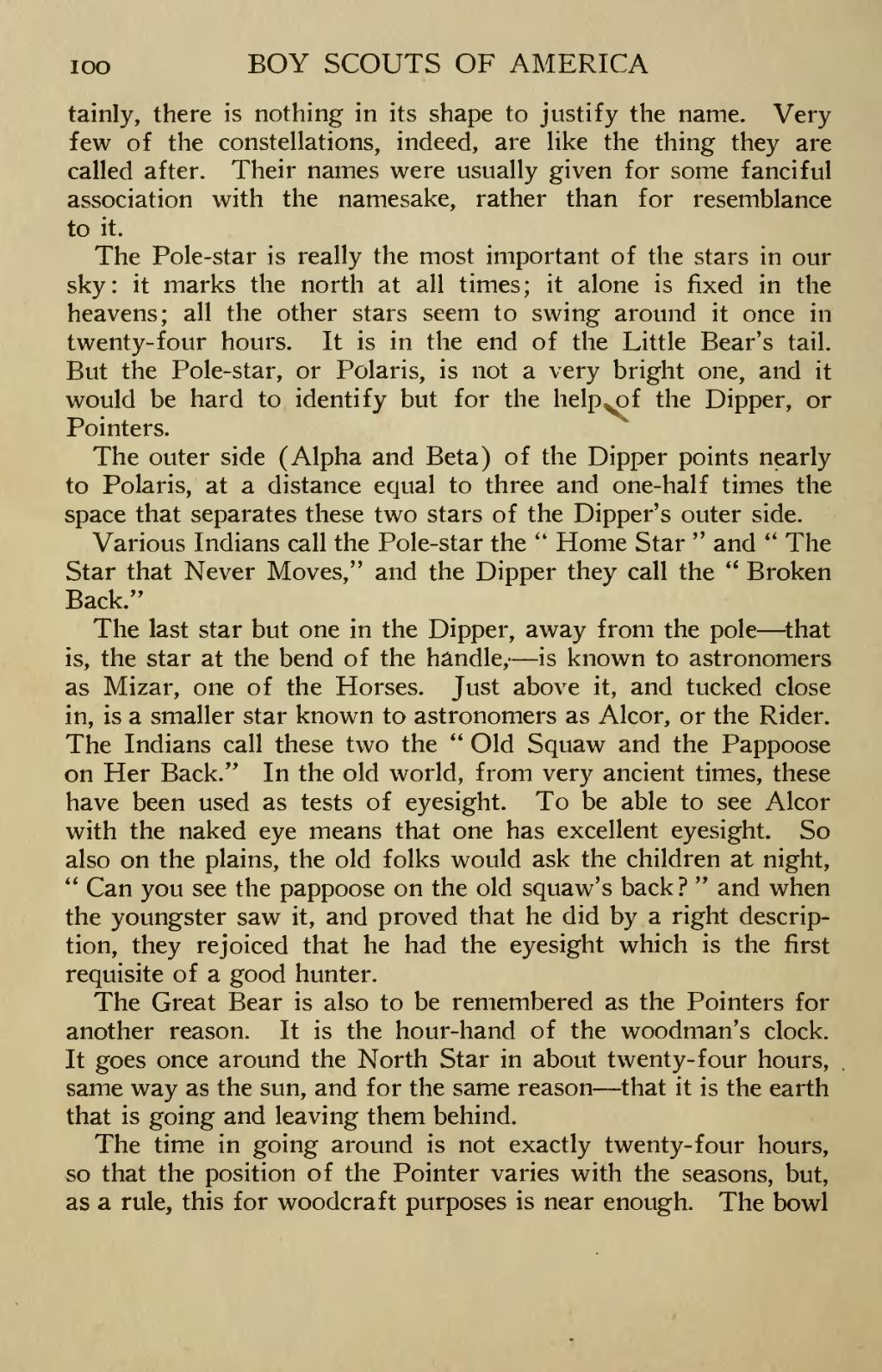loo BOY SCOUTS OF AMERICA tainly, there is nothing in its shape to justify the name. Very few of the constellations, indeed, are like the thing they are called after. Their names were usually given for some fanciful association with the namesake, rather than for resemblance to it. The Pole-star is really the most important of the stars in our sky: it marks the north at all times; it alone is fixed in the heavens; all the other stars seem to swing around it once in twenty-four hours. It is in the end of the Little Bear's tail. But the Pole-star, or Polaris, is not a very bright one, and it would be hard to identify but for the help^of the Dipper, or Pointers. The outer side (Alpha and Beta) of the Dipper points nearly to Polaris, at a distance equal to three and one-half times the space that separates these two stars of the Dipper's outer side. Various Indians call the Pole-star the " Home Star " and The Star that Never Moves," and the Dipper they call the " Broken Back." The last star but one in the Dipper, away from the pole — ^that is, the star at the bend of the handle, — is known to astronomers as Mizar, one of the Horses. Just above it, and tucked close in, is a smaller star known to astronomers as Alcor, or the Rider. The Indians call these two the Old Squaw and the Pappoose on Her Back." In the old world, from very ancient times, these have been used as tests of eyesight. To be able to see Alcor with the naked eye means that one has excellent eyesight. So also on the plains, the old folks would ask the children at night, " Can you see the pappoose on the old squaw's back? " and when the youngster saw it, and proved that he did by a right descrip- tion, they rejoiced that he had the eyesight which is the first requisite of a good hunter. The Great Bear is also to be remembered as the Pointers for another reason. It is the hour-hand of the woodman's clock. It goes once around the North Star in about twenty- four hours, same way as the sun, and for the same reason — that it is the earth that is going and leaving them behind. The time in going around is not exactly twenty-four hours, so that the position of the Pointer varies with the seasons, but, as a rule, this for woodcraft purposes is near enough. The bowl
Stránka:roll 1910.djvu/116
Z thewoodcraft.org
Tato stránka nebyla zkontrolována
